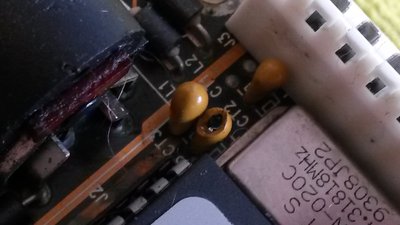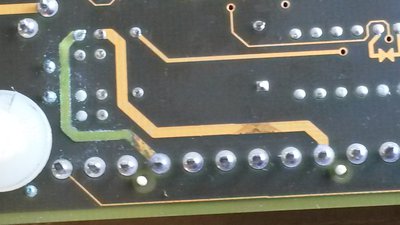First post, by 386_junkie
- Rank
- Oldbie
Guys,
Got this board a while back that had a minor case of a leaking battey, it worked though and I removed the battery as soon as it arrived. The board was relatively undamaged with the exception of a trace between pin 8 (+5v) I believe of the AT power connector and pin 4 which had some signs of corrosion that I had planned to address later.
Of course, with the board working and other projects etc... I forgot! Earlier today I was testing a new motherboard recieved this morning (yay!) but before I mounted the new system I wanted to make sure I was dismantling a working system. Pop! went the old system and came that burnt component smell we have all experienced at some time or other.
Not exactly a great start... but I managed to narrow it down to the open circuit and this yellow resistor type component... does anyone now what it is, it's likely ratings, and where I can find a spare part?
This board is too young to die... and should have a long and healthy life ahead of it!
Thanks in advance.



